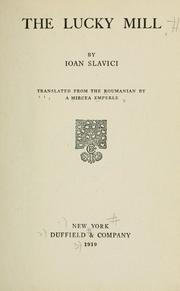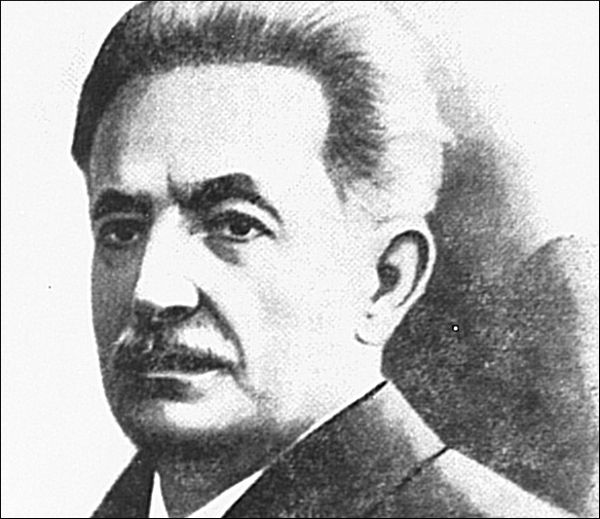
- The Lucky Mill
- Published by: Several
- Level: Intermediate
- First Published in: 1881
A man goes to tragic lengths to become rich, sacrificing his family, his business, and his future by involving himself in a shady, illegal venture that leads him to moral ruin and murder. A 19th century classic of Romanian literature.

Ioan Slavici was a 19th century Romanian writer and journalist, whose novel The Lucky Mill was published in his debut volume Novele din popor in 1881. It has a realistic story, told by an omniscient and involved narrator, and it is built on a cyclical structure, starting and ending with the words of an old woman, which gives unity and meaning to the text. She presents the moral thesis of the novel -- that man must be content with what he has: “Omul să fie mulţumit cu sărăcia sa, căci, dacă e vorba, nu bogăţia, ci liniştea colibei tale te face fericit” (Man must be satisfied with his poverty, for it is not wealth, but silence that makes your hut happy). Failure to follow this principle will bring a tragic end to the characters, and the old woman finally expresses: “Simţeam eu că nu are să iasă bine: dar aşa le-a fost dată” (I felt that it would not go well: but that’s the way it has been given).
"Ioan Slavici’s work has a profoundly popular quality, what with the moral concept of its theme and its love for the human soul."
The novel depicts the fatal consequences of the main character’s greed, as Ghiţă deviates from the fundamental ethical principles of the human soul and is dehumanized because of his thirst for enrichment. The conflict is both psychological and social. A shoemaker by trade, Ghiţă becomes tired of mending “cismele oamenilor” (men’s boots), especially if they “merg toată săptămâna în opinci ori desculţi, iar dacă Dumineca e noroi, îşi duc cismele în mână până la biserică” (walk in sandals or barefoot all week, and if there’s mud on Sunday, they take their boots in hand until they get to church). So, he rents a room at The Lucky Mill Inn. This is a real place, located at a crossroads where herds of pigs pass to and from the town of Ineu, a very important location for business and commerce. After moving to the inn with his wife, his mother, and his two children, Ghiţă rapidly becomes well-known and his business turns a profit.

This situation is interrupted by the villain of the novel, Lică Sămădăul, an “om cu stare” (a man with financial status) who made the “tremura toată lunca”(meadow tremble) because he was “om aspru şi neîndurat”(a harsh and intolerable man). Being obsessed with his desire for money, Ghiţă involves himself in Lică’s illegal business. He changes, comes to neglect his family, and commits crimes to improve his financial condition. This passion for money dehumanizes Ghiţă, who cannot oppose his destiny and who falls – slowly but surely – from the honest and industrious man he was to complicity in illegal business and crime and, finally, to murder.
"The moral thesis of the novel: man must be content with what he has."
Ioan Slavici’s work has a profoundly popular quality, what with the moral concept of its theme and its love for the human soul. He is a true master of building dialogues and interior monologues, and examining the reactions, inner feelings, and thoughts of his characters. Although he was accused of an excessive use of regionalisms, his unique style is oral, and his language is original, forceful, sober, and spontaneous.
